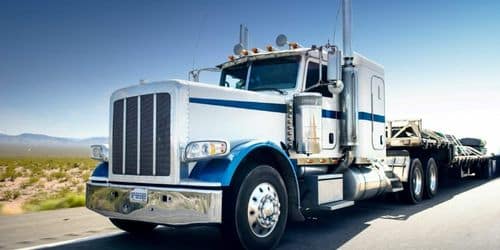If you’re an owner-operator or small fleet owner, you may be wondering if you need to start using electronic logging devices (ELDs). The answer is “maybe.” Here’s what you need to know about ELDs and how they might affect your business.
What are ELDs and What Do They Do?
An ELD, or electronic logging device, is a piece of technology that connects to a vehicle’s engine and automatically records driver hours of service (HOS). ELDs came into existence to help commercial motor vehicle (CMV) drivers and motor carriers comply with the mandate set forth by the Federal Motor Carrier Safety Administration (FMCSA).
The FMCSA’s ELD rule requires that beginning December 18, 2017, interstate CMV drivers who are required to maintain paper logs must use ELDs. Drivers who currently use Automatic On-Board Recording Devices (AOBRDs) have until December 16, 2019, to transition to ELDs.
ELDs must meet certain technical specifications set by the FMCSA in order to be compliant. These devices must be able to connect directly to a vehicle’s engine in order to automatically record driving time. They must also allow driver input for cases when HOS exceptions need to be logged; they must be able to transmit data electronically, and they must have tamper-resistant capabilities.
How ELDs Will Impact Owner-Operators and Small Fleets?
The implementation of ELDs (electronic logging devices) is a major change that is happening in the trucking industry. This change will have a significant impact on owner-operators and small fleets, who make up a large portion of the trucking industry.
ELDs are devices that are used to track a driver’s hours of service (HOS). They are connected to the vehicle’s engine and automatically record data such as date, time, location, mileage, and driving status (e.g., driving, idling, or off-duty). This information is then stored electronically and can be accessed by the driver or fleet manager.
Previously, HOS were tracked using paper logs. This process was time-consuming and often resulted in errors. ELDs will help to improve accuracy and compliance with HOS regulations.
Owner-operators and small fleets will need to make some changes in order to comply with the ELD mandate. For example, they will need to purchase ELDs for their vehicles and train their drivers on how to use them. There may also be some costs associated with implementing an ELD system, such as subscription fees and data plans.
Overall, the transition to ELDs will positively change the trucking industry. It will lead to increased compliance with HOS regulations and improved safety on the roads.
The Benefits of Using ELDs
The ELD Mandate goes into effect in just a few months, and many small trucking fleets are still trying to decide if they should use ELDs or AOBRDs. In this article, we’ll explore the benefits of using ELDs so you can make the best decision for your fleet.
ELDs offer many benefits for both drivers and fleet managers, including:
#1. Reduced Paperwork
One of the most significant advantages of using ELDs is that they drastically reduce the amount of paperwork that drivers and fleet managers have to deal with. Everything is automatically logged and stored electronically, which eliminates the need for paper logs.
#2. Improved Compliance
ELDs make it much easier to comply with HOS regulations because everything is automatically logged and tracked. This can save you time and money in the long run because you won’t have to worry about potential HOS violations.
#3. Better Communication
ELDs make it easier for fleet managers to communicate with their drivers because all of the information is stored in one central location. Can save you time and hassle when you need to get in touch with a driver or check on their status.
Overall, ELDs offer a number of advantages for both drivers and fleet managers. If you’re still on the fence about whether or not to use ELDs, be sure to weigh the pros and cons carefully before making a decision.
How to Choose the Right ELD for Your Business?
When it comes to selecting an electronic logging device (ELD) for your business, there are a few key considerations you’ll need to keep in mind. Here are a few tips on how to choose the right ELD for your business:
#1. Determine Your Business Needs
The first step is to determine what your business needs are. This will help you narrow down your options and find an ELD that fits your specific requirements. Do you need an ELD that is compliant with Hours of Service (HOS) regulations? Do you need an ELD that integrates with other fleet management software? Knowing what your needs are will help you find the right ELD for your business.
#2. Research Your Options
Once you know what your needs are, it’s time to start researching your options. There is a variety of ELDs on the market, so take some time to compare different products and see which one is the best fit for your business. Be sure to read online reviews and compare pricing before making your final decision.
#3. Get Up and Running Quickly
Once you’ve selected an ELD, the next step is to get it up and running quickly. Make sure that you follow the installation instructions carefully and test the ELD to ensure that it’s working properly. Once you have everything up and running, be sure to train your employees on how to use the new system so they can be compliant with HOS regulations.
Installation and Use of ELDs
Installing an ELD is a simple process that should not take more than a few minutes per truck. The installation process will vary slightly depending on the type of ELD you choose, but in general, you will need to:
- Mount the ELD device in the truck.
- Connect the device to the vehicle’s diagnostics port.
- Download and install the ELD software on a compatible electronic device.
- Create an account with the ELD provider.
- Register each driver who will be using the ELD system.
- Train your drivers on how to use the ELD system.
The future of ELDs
When it comes to ELDs, there is a lot of misinformation out there. Unfortunately, this can cause confusion and make it difficult for owner-operators and small fleets to make the best decisions for their businesses.
To help clear things up, we’ve put together a guide that covers everything you need to know about ELDs, including:
- What they are
- How they work
- The benefits of using them
- The different types of ELDs on the market
- How to choose the right ELD for your business
We hope this guide will help you understand more about ELDs and how they can benefit your business. If you have any further questions, please don’t hesitate to contact us.






